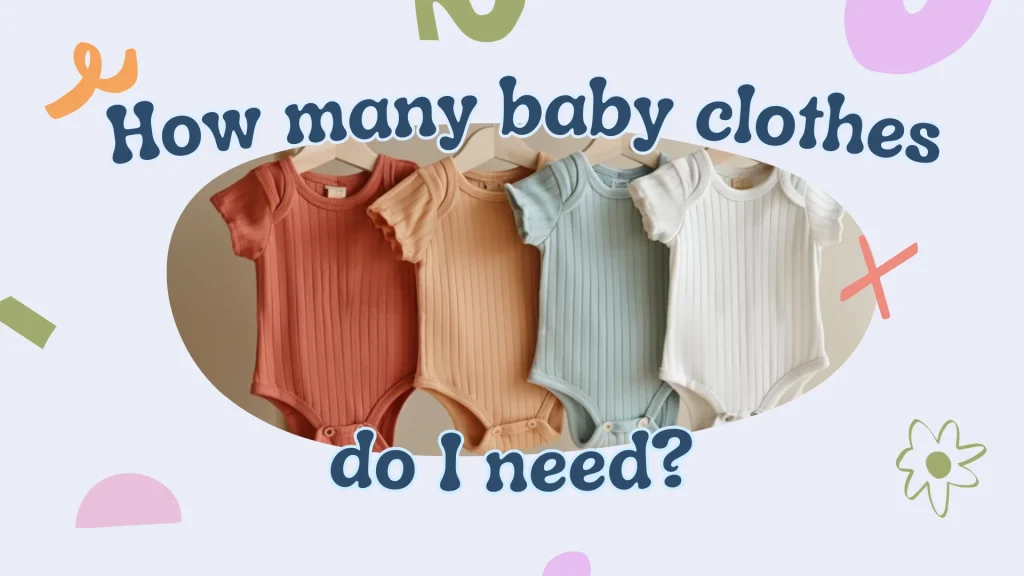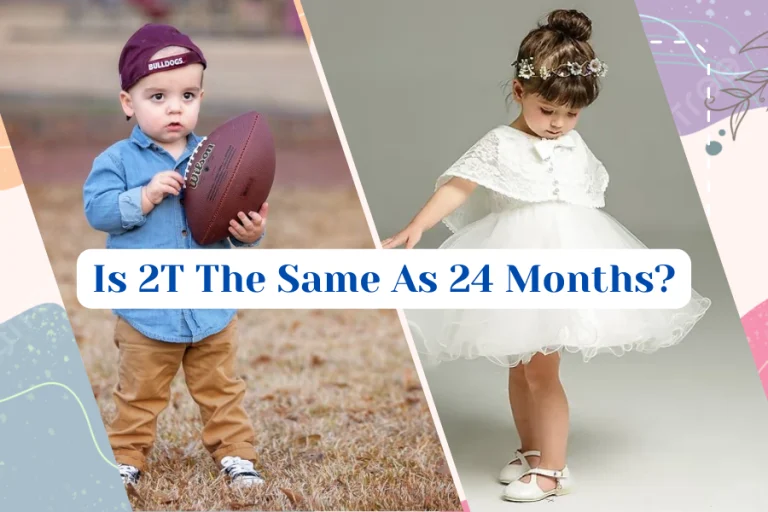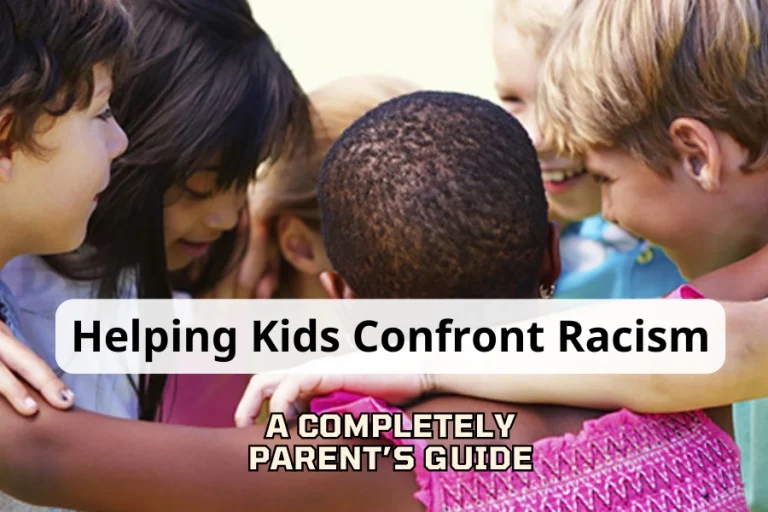
When expecting a new little angel, parents often want to prepare plenty of clothes for their baby. With the mindset of “the more, the better,” buying adorable and tiny bodysuits becomes irresistible. Having many spare clothes means you won’t worry too much whenever your baby makes a mess; there will always be a clean outfit ready for a quick change.
On the other hand, distinguishing between having enough and having too many clothes is not simple. Babies grow so quickly that sometimes you don’t even get a chance to dress them in the cute outfits you’ve prepared.
So, how many clothes do we actually need for a baby? Come with me to find what is the perfect answer and a few tips to keep in mind when shopping for a baby’s essential checklist.
Baby clothes sizes
Before starting to fill up your baby’s lovely wardrobe, parents should know how baby clothes sizes work. In fact, baby clothes sizes depend on a lot of factors, such as age, weight, length, etc. Generally, most US baby clothing brands use average weight to decide baby clothing sizes. These weights are general guides that many brands follow for baby clothes. Take a look at the baby clothes sizes chart below:

However, parents should note that the chart above is for reference only. Every baby grows at a different rate, so the measurements won’t be entirely accurate. Not all newborn babies will fit into size 0000; some babies can wear size 0-3-month clothing right from birth. At this point, parents might be wondering, “How can I know my baby’s clothing size when they aren’t born yet?” Parents do not need to worry, as the doctor will provide you with estimates on how big your baby will be, so you can decide what clothing size to start shopping for.
How many baby clothes do I need?
For a newborn, you’ll need about 10-14 outfits, including 8-10 bodysuits and 5-7 pairs of pants or leggings. It’s also helpful to have 5-7 footed pajamas for sleeping, 2-3 swaddles, and a few hats and pairs of socks. You should consider seasonal needs, like a coat and mittens for winter.
Basic baby clothing registry shopping
There are no specific rules regarding the number of clothes each baby should have. The quantity depends on the parents’ decision. However, while there’s no maximum number, there is a recommended minimum of clothes you should buy. I believe that this quantity and these types of clothes are basic and reasonable since babies grow very quickly, and soon enough, you won’t need them anymore.
- 7 x bodysuits (a mix of long and short-sleeved): Bodysuits, also known as onesies, are a must-have in your little one’s closet. Bodysuits typically come in two simple designs: pullover and foldover. A good bodysuit should have a 3-snap closure between the baby’s legs and a wide neckline to avoid sliding over your baby’s head. Sarah Hollingsworth, the founder of Poppylist, said, “Newborn babies have limited—basically non-existent—neck control and typically don’t like anything going over their heads.” That is why foldover bodysuits (often called kimono or side-snap) are very popular and favored by most parents for their smart design. The envelope neckline allows parents to easily slide it off downward instead of over the head in case of a diaper leak. Additionally, bodysuits come in both short-sleeved and long-sleeved versions, suitable for different weather conditions throughout the year.
- 5-7 x sleepers or pajamas: Footed pajamas are a great choice for keeping your baby warm on cold nights, especially since blankets are not recommended for infants in their first year. A small tip when picking footed pajamas, parents try to avoid ones with buttons. Fastening buttons at night can be very difficult. Zippers are much better!
- 5-7 sets shirt and pants: Most parents find that simple clothes like T-shirts and pants are very easy to get on and off. In terms of baby T-shirts, look for those with side snaps or expandable necklines. For pants, babies will prefer those with comfortable waistbands that are not too tight and do not press into their tummy.
- 5-7 pairs of socks: Keeping your baby’s feet warm is always important, even in the hot season. If you don’t want to spend much time finding and matching these tiny cute socks, just buy them all in one color.
This is just a basic baby clothing registry. In reality, the quantity and type of clothing will depend on each growth stage and the season. Most parents want to prepare and organize everything thoroughly before their baby is born. However, this approach can be risky because it is hard to predict the exact clothing size. Therefore, the best way to avoid waste is to shop gradually in small steps according to each growth stage and the season. Don’t plan too far ahead with items for when the baby grows older or for future seasons, as it is very difficult to predict your baby’s growth.
Staged baby clothes shopping:
- For newborn stage and 0-3-month stage: Parents should first prepare clothes for their baby in two stages: newborn and 0-3 months. The newborn stage lasts quite briefly, around 4 weeks (28 days), and many babies outgrow this stage quickly. Generally, parents don’t need to buy too many clothes in newborn sizes. The basic checklist can be reduced to:
- 5 Onesies
- 3 Pants/Leggings
- 5 Footed Pajamas
Additionally, combine this with some clothing in size 0-3 months in case your baby arrives larger than expected or grows quickly. This way, you won’t have to keep running back and forth to the store.
Besides your baby will also need other extra essential clothes during this stage, such as:
- 1-2 cotton/wool hats
- 3-4 mittens
- 2-3 swaddle blankets
- For the next stages: keep shopping for clothes based on your observations and predictions of your baby’s growth rate. You’ll need roughly the same amount of basic baby clothing, adjusting for growth stages. For example, parents should add more bibs to catch extra drool and spit-up when the baby reaches 3-6 months.
Seasonal extra baby clothes shopping:
When the weather changes, your little darling should be dressed in suitable clothes to feel comfortable.
- Summer adds: here are some extras items you’ll need for your baby’s wardrobe
- 4-6 shorts
- 1-2 sun hats
- 2 lightweight wearable blankets
- 1-2 swimsuits
- Winter adds: consider some of great options to keep your baby extra warm
- 4-6 turtlenecks
- 2-4 sweaters
- 1-2 jackets
- 1 snowsuit or bunting.
Tips for buying newborn baby clothes
1. Plan a budget, make a list of the clothes you need and prioritize them
New parents should first of all set a budget planning, then make a list of necessary items, and arrange them according to their importance. There is a wide variety of baby clothes on the market today, often made to be cute and attractive. Parents can easily be tempted by these cute items. As a result, many parents tend to overspend and exceed their budget but still do not get the basic clothes that their baby needs.
Therefore, making a list of clothes you need and arranging them carefully is a smart idea. This way, you will not only save your budget but also will not fall into the trap of buying a lot but still don’t have enough of what’s necessary.
2. Quality Over Quantity
Do remember this tip ‘Quality over quantity’ always. A baby’s skin is very sensitive and irritated. Therefore, items that direct contact with their skin, such as clothes and swaddle blankets, must be made from soft, breathable, and gentle materials. Organic fabrics that are free from chemicals are the best for babies; these include 100% organic cotton or bamboo. Using these organic fabrics can help your baby feel comfortable, warm, and cozy.
Additionally, parents should opt for white, cream, or light-colored clothing as it’s safer for a baby’s skin. Do not purchase clothes with bright colors as dyes may cause an allergic reaction to your baby.
3. Compare size from brands
Sizes vary between types of clothes and manufacturers, so it’s worth comparing clothes to others you already have, rather than relying only on the size on the label.
4. Buying gender-neutral clothing
If you don’t know your baby’s gender, just buy gender-neutral clothing. It’s practical if you plan to have more kids in the future and don’t want to buy too many new clothes. You will find that unisex clothes are a more practical option. Without worrying about starting from scratch, parents can reuse the same clothes and save money. Additionally, it’s easier to pass neutral clothing on from one family to the next.
There are several options for handling newborn clothes that you no longer need, including: pass them on, sell them, transform them into keepsakes, donate them to charity, or recycle them if they’re too worn out.
Yes, it is totally safe to reuse baby clothes. Just make sure that the clothes are free from stains, tears, or holes. Reusing pre-owned clothes is a budget-friendly and smart option for your family.
No, you shouldn’t. Oversized clothes are not comfortable for a baby; they also can be unsafe, especially for sleepwear. Clothes that are too large can also swallow and tangle the baby, which can result in a danger of suffocation.
Final thought
In conclusion, parents should buy baby clothes in a moderate amount, ensuring they are sufficient and shop in small steps according to each developmental stage and season to make sure they fit your baby when needed. Additionally, don’t forget to apply the tips I’ve shared in this article. I am pretty sure that these tips will be truly helpful for you as you prepare and fill up your baby’s wardrobe.






